Woodruff Library Building Spring
Robert W. Woodruff Library draft
The Robert W. Woodruff Library brings together technology specialists and librarians in one facility to provide a range of services, such as collections, study space, research help, etc., to support the academic mission of Emory University.
Contact
cnhill2@emory.eduIn the Wake of Slavery and Dispossession
Emory University hosted a symposium on slavery and dispossession in September 2021 to highlight the on-going efforts and research in this area, encourage creative interpretations and dialogue, and to reckon with Emory’s legacy of slavery and racism and its ongoing enduring effects.
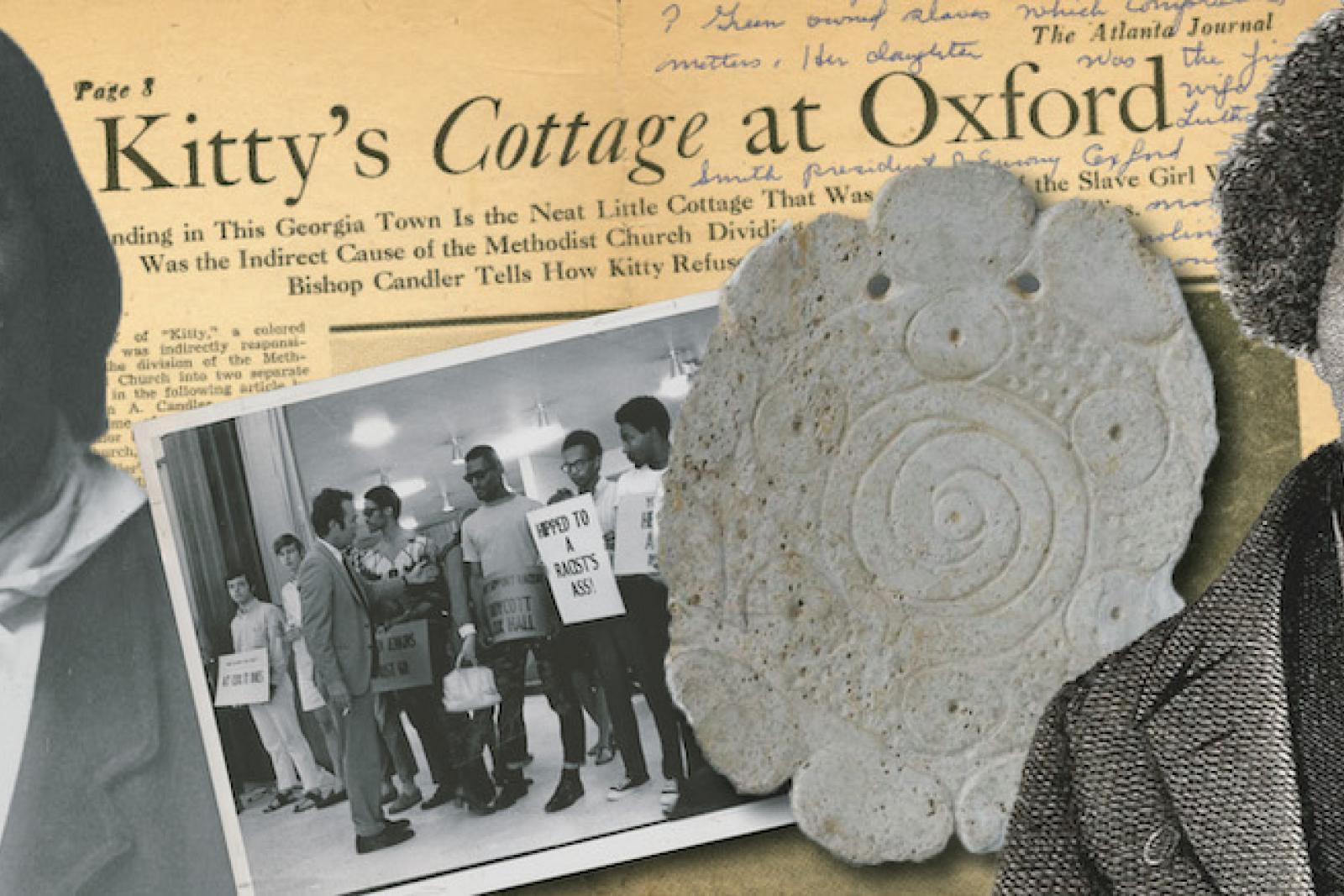
About
Many universities are examining their histories and discovering their connections to slave labor and Indigenous dispossession. This symposium highlighted the ongoing efforts and research in the areas of slavery, dispossession, and restorative justice, with a focus on the legacy of racism and its enduring effects at Emory University. The sessions included creative interpretations and dialogue, with a primary focus on the perspectives of Black, Native American, and Indigenous peoples.
- See the online program schedule for a complete list of sessions and our complementary programming for related and ongoing exhibitions.
- Watch a brief overview of the symposium, and visit the session playlist on YouTube.
- Did you attend? We would love to know about your experience via this short survey.
Related Links

Emory is an EEO Employer-Disability/Veteran
Acknowledgement
We acknowledge that Emory University was founded in 1836 on the historic lands of the Muscogee (Creek) Nation, 15 years after the First Treaty of Indian Springs (1821) dispossessed the Muscogee of land including both Emory campus locations. We also acknowledge that Emory University's founders were slaveholders, and the Oxford campus was originally constructed by enslaved people. To these peoples and their descendants, we acknowledge the grave injustices inflicted on them, and we recognize the indelible mark of their labor on the creation of the university.
Collage Images
Black-and-white photos of Black student activists at Emory University (Emory University Archives)
Rare first edition of David Walker's 19th century anti-slavery book, "Appeal" owned and signed by W.E.B. Du Bois, acquired by Emory University's Stuart A. Rose Manuscript, Archives and Rare Book Library
Photograph of Muscogee Creek Nation leader Chitto Harjo (Chief Crazy Snake), a vocal opponent of government efforts to divide communal land into individually owned allotments (Library of Congress)
Atlanta Journal newspaper article on Kitty's Cottage in Oxford, GA, home to a woman who was enslaved by one of Emory University's trustees
15th-century AD Mississippian shell gorget (pendant), with spirals and land representation (Michael C. Carlos Museum)
Portrait of Frederick Douglass featured in an original copy of one of the abolitionist’s autobiographies, “My Bondage and My Freedom,” published in 1855 (Rose Library)
1850 edition of The Narrative of Sojourner Truth acquired by the Stuart A. Rose Manuscript, Archives and Rare Book Library (article on p. 31)
1925 aerial view of original buildings on Emory University's Oxford campus, which were constructed with slave labor (Emory University Archives)
Voices from the Other Side
The artwork and literature showcased in this exhibit highlight the intelligence and talent of a student body that society often tries to forget. Incarcerated men at Phillips State Prison in Buford, Georgia, created the works between 2008 and 2015 in courses sponsored by Common Good Atlanta, a nonprofit organization which was accredited by Georgia State University. The program continues today to provide a platform for incarcerated individuals to earn credit towards a degree, exercise critical thinking skills, and express themselves within an institution that systematically seeks to strip individuals of their autonomy.

"Actually, I still need a lot of work as a human being, but I am a far better person today than I was before I embraced the many teachings that I’ve read.” - William II, “Finding My Spiritual Outlook In Books”
The artwork and literature showcased in this exhibit highlight the intelligence and talent of a student body that society often tries to forget. Incarcerated men at Phillips State Prison in Buford, Georgia, created the works between 2008 and 2015 in courses sponsored by Common Good Atlanta, a nonprofit organization which was accredited by Georgia State University. The program continues today to provide a platform for incarcerated individuals to earn credit towards a degree, exercise critical thinking skills, and express themselves within an institution that systematically seeks to strip individuals of their autonomy.
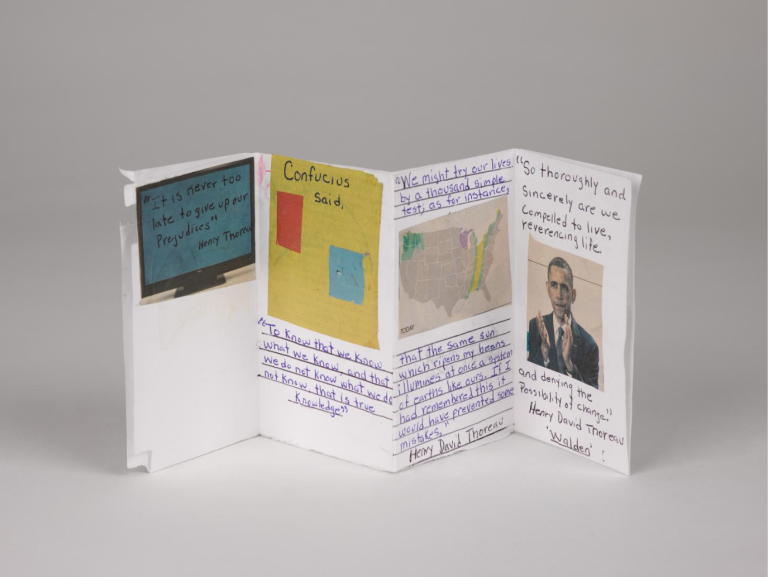
Speak What Must Be Spoken
Emory Libraries selected “Still Raising Hell” as the basis for the Libraries first K-12 exhibit to serve community schools. Barbara Coble of Emory University’s Graduation Generation Education Partnership joined the Libraries’ team and led the development of curriculum aligning with state standards for excellence supporting fine arts classes and social studies and English/language arts.
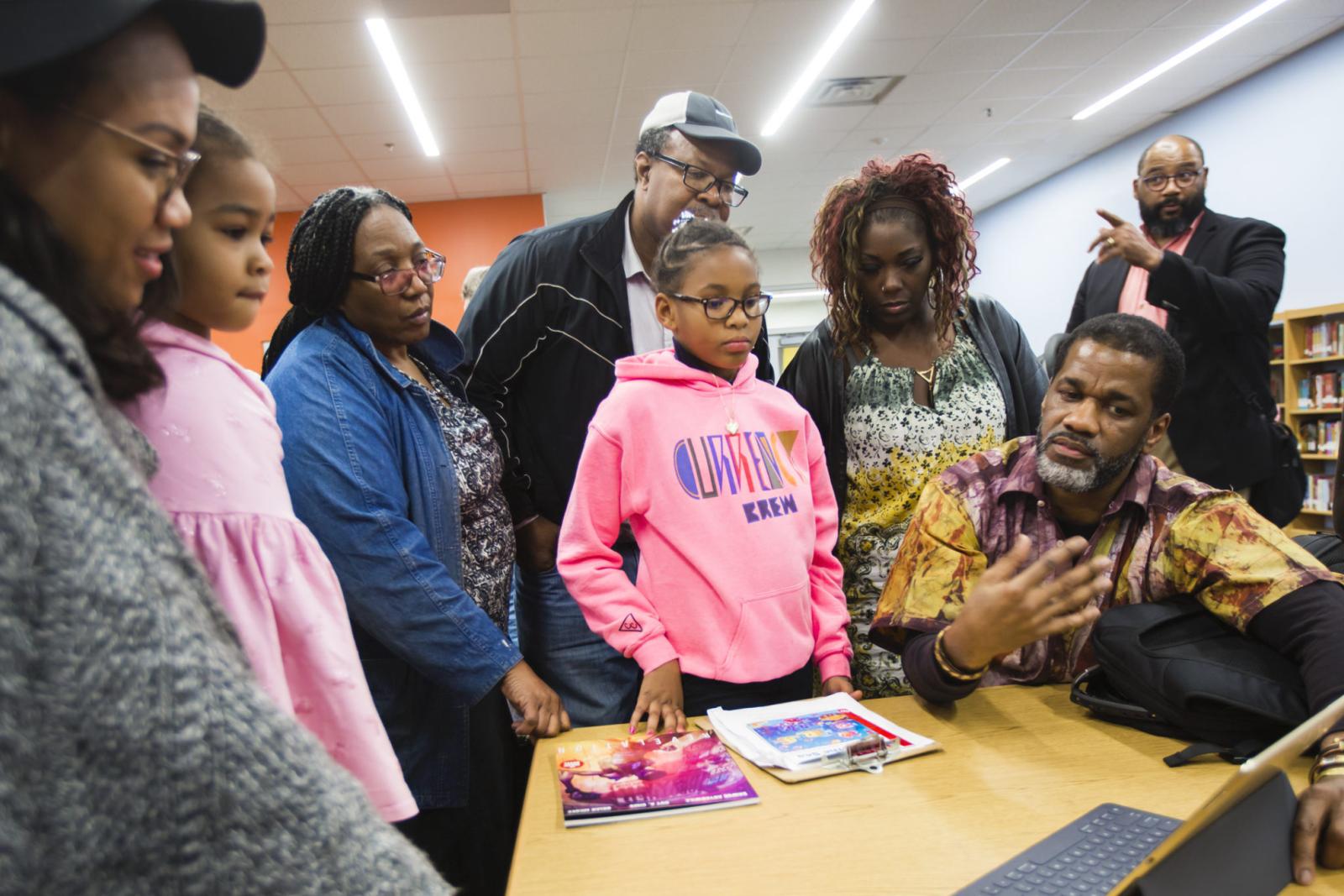
"Archives, those which document the lives of African American artists, are essential to telling the complex stories relative to the development of black life in 20th and 21st century America." – Pellom McDaniels III, Curator of African American Collections
Due to COVID-19, travel for this exhibition has been suspended.
“Speak What Must Be Spoken: Art, Archives, and Activism” is the culmination of projects initiated in 2016 around the theme of black art and activism by the late Pellom McDaniels III, Rose Library’s curator of African American collections. McDaniels curated “Still Raising Hell: The Art, Activism, and Archives of Camille Billops and James V. Hatch,” a major exhibition in the Emory Libraries main gallery during 2016-2017.
Emory Libraries selected “Still Raising Hell” as the basis for the Libraries first K-12 exhibit to serve community schools. Barbara Coble of Emory University’s Graduation Generation Education Partnership joined the Libraries’ team and led the development of curriculum aligning with state standards for excellence supporting fine arts classes and social studies and English/language arts.
The Libraries exhibitions team adapted elements of the original exhibition and created new elements for installation in a school setting. "Speak What Must Be Spoken" now consists of 10 units that can be used alone or combined with others.
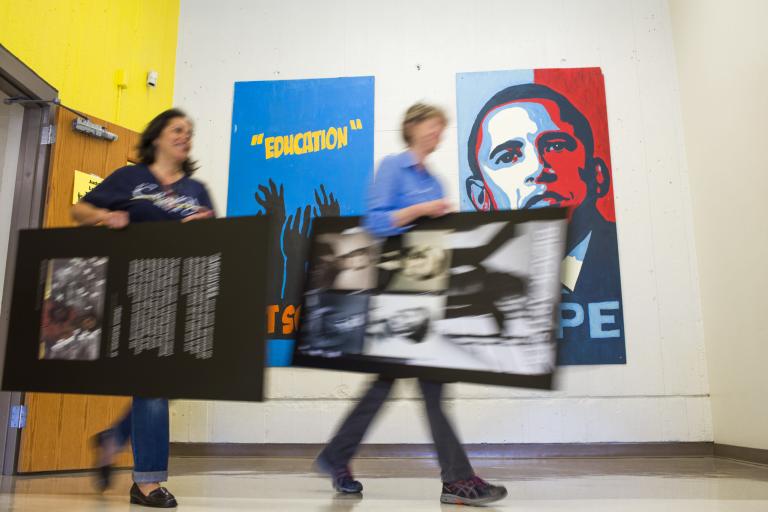
The World Between Word and Image
"The World Between Word and Image: Artists' Books and Archives from Atlanta Contemporary Art Center, Nexus Contemporary Art Center, and Nexus Press" presents archival material from the Atlanta Contemporary Art Center, Nexus Contemporary Art Center, and Nexus Press collection held by the Manuscript, Archives, and Rare Book Library (MARBL). It features approximately 15 artists' books displayed at a time in three cases. A fresh crop of books focusing on new themes will be rotated in every three months. A fourth case will feature archival material from records of the Atlanta Contemporary Art Center, the parent organization of Nexus Press.
At this time, the three thematic cases are as follows:
"What Is a Book?"
"History, Memory, and the Reinterpretation of Tradition"
"Photography"
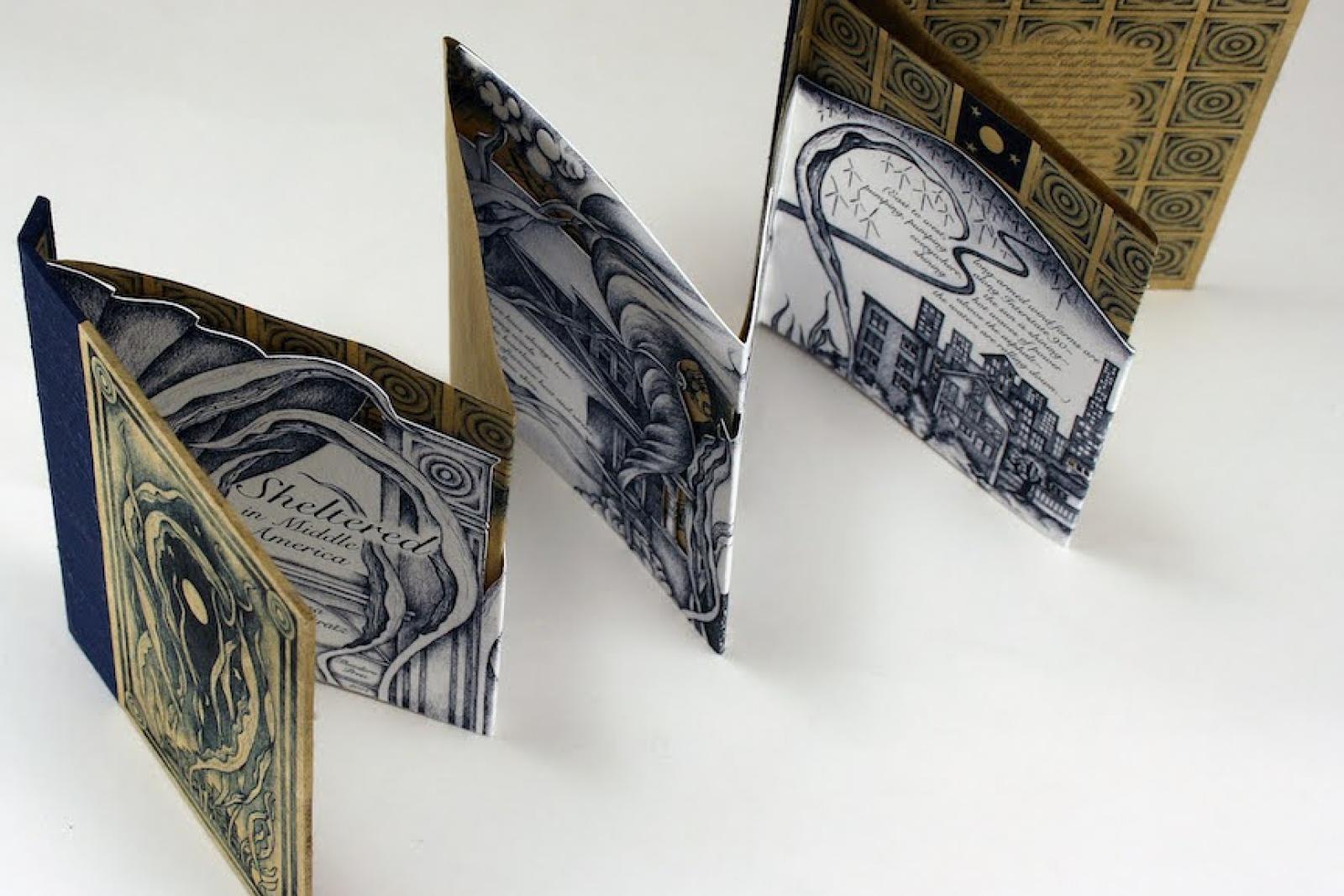
"The World Between Word and Image: Artists’ Books and Archives from Atlanta Contemporary Art Center, Nexus Contemporary Art Center, and Nexus Press" presents archival material from the Atlanta Contemporary Art Center, Nexus Contemporary Art Center, and Nexus Press collection held by the Rose Manuscript, Archives, and Rare Book Library. It features approximately 15 artists’ books displayed at a time in three cases. A fresh crop of books focusing on new themes will be rotated in every three months. A fourth case will feature archival material from records of the Atlanta Contemporary Art Center, the parent organization of Nexus Press.
At this time, the three thematic cases are as follows:
- "What Is a Book?"
- "History, Memory, and the Reinterpretation of Tradition"
- "Photography"
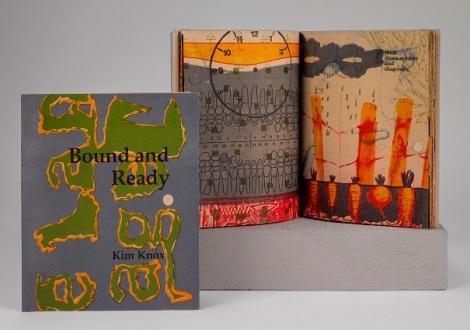
Weekdays: Free after 5pm | Weekends: Free
The Dream Machine
The exhibition reconsiders postwar literature and the ways it mirrored, predicted, and remade the culture around it, with special focus on the influential group known as 'the Beats.' Pulling from the Rose Library's rich literary collections, especially the Raymond Danowski Poetry Library, the show rediscovers a number of fascinating countercultural writers and will be the first major consideration of the Beats in the U.S. in nearly a decade.
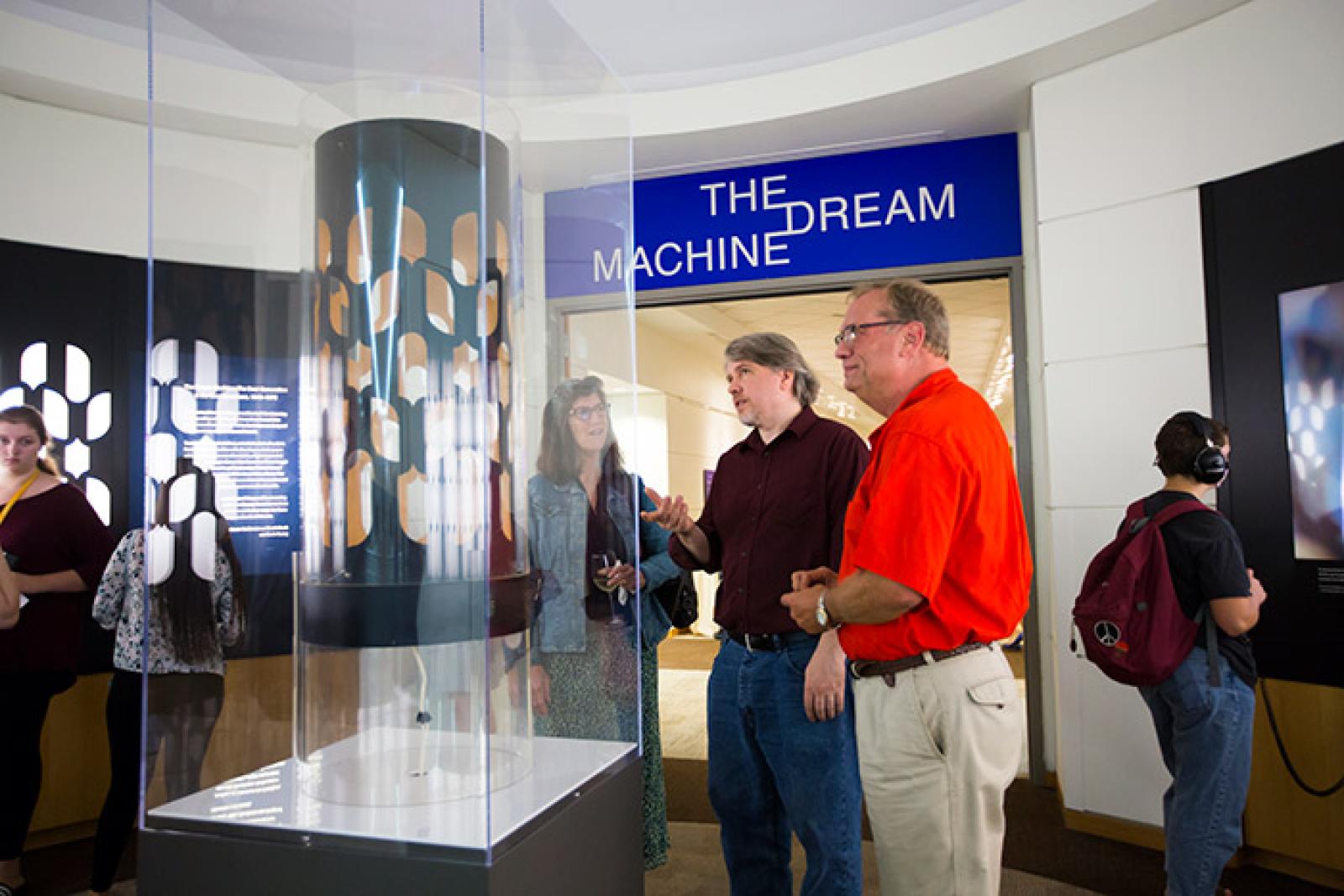
"A colorful cast of characters shaped post-World War II American literature and culture."
The exhibition reconsiders postwar literature and the ways it mirrored, predicted, and remade the culture around it, with special focus on the influential group known as “the Beats.” Pulling from the Rose Library’s rich literary collections, especially the Raymond Danowski Poetry Library, the show rediscovers a number of fascinating countercultural writers and will be the first major consideration of the Beats in the U.S. in nearly a decade.

Weekdays: Free after 5pm | Weekends: Free
